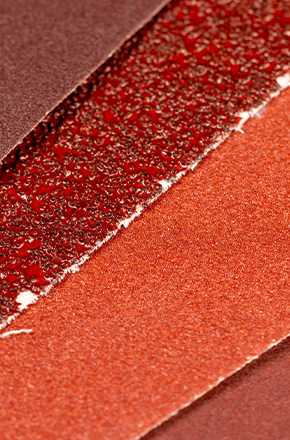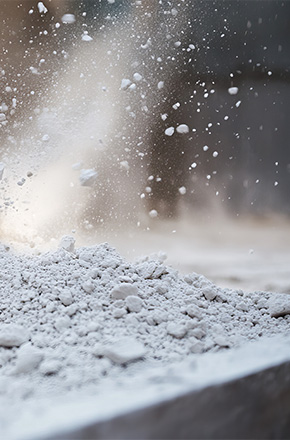Lime Textures: Application Techniques and Design Potential
Materials becomes surface, surface becomes experience. In the realm of contemporary surface design, decorative lime stands out as one of the most advanced solutions—yet deeply rooted in Italy’s artisanal tradition. Not only for its rich, vibrant, expressive aesthetic, but also for the technical depth of its application and its versatility in design.
When technique shapes aesthetics
A material effect is never just a formal result—it is the outcome of a process.
The texture we see—trowelled, shaded, sanded—is the result of precise technical choices: material composition, grain size, application methods, drying times, tools used, and environmental conditions.
When working with decorative lime, the application cycle is built on several key steps:
– Surface preparation: the substrate must be compact, stable, homogeneous, and preferably absorbent. A uniform base is crucial to prevent visual inconsistencies.
– Application of the first coat with a trowel or stainless-steel float, to set the material language of the surface.
– Application of subsequent layers — the number of coats depends on the desired effect. Each layer builds visual depth and tactile richness.
– Surface finishing (trowelling, smoothing, polishing, or glazing), performed at precise drying stages to achieve cloud, patinated, or vibrant effects.
The applicator’s skill and expertise directly impact the final outcome. Lime does not allow for automatisms: every gesture is an interpretation, and every finish is unrepeatable.

Texture and grain size: reading the material by touch
One of the most significant technical variables is lime’s granulometry (grain size). It ranges from ultra-fine finishes—almost velvety to the touch, with soft chromatic tones—ideal for refined, continuous, high-design surfaces, to more gritty or textured options that evoke a marked artisanal feel.
From a sensory perspective, you can achieve:
– A compact and deep effect, with rich reflections and tone-on-tone balance—ideal for elegant, subtle environments.
– A raw, rugged finish that evokes coarse materials and suits bold, urban, or brutalist aesthetics.
– A porous, airy texture that softens colour intensity and enhances natural light interaction.
These nuances can be created with minimal technical variation: a different tool, a changed trowel angle, or a longer waiting time before smoothing. This is where technique becomes style.

Layering, transparency, depth
Lime is a stratifiable material. Its visual depth emerges from the controlled layering of coats. Partial transparency between layers, emerging undertones, and light mineral glazes create an optical-material effect that shifts with light and viewing angle.
This result is particularly suited to spaces seeking minimalism: boutiques, high-end residences, galleries, or luxury hospitality.

Vertical, horizontal, and integrated applications
While traditionally associated with vertical surfaces, lime can now also be applied on horizontal (non-walkable) planes, integrated architectural elements, custom furniture, and panelling. This material continuity between walls, niches, window edges, and built-in features supports an organic, fluid design expression.
A key technical benefit is the ability to work on various substrates: plasterboard, traditional plasters, treated screeds, and—with the right primers—even non-absorbent surfaces. Adhesion and internal cohesion of the material are essential to ensure long-term durability and integrity.

Chromatic versatility and compatibility with natural pigments
Decorative lime is naturally compatible with pigments—especially inorganic ones.
Its light base supports a wide colour palette that remains matte, warm, and earthy. Colours are never saturated, but deep, nuanced, and never flat.
Technically, pigments can be mixed into the base material or applied on top with lime washes or coloured waxes, enabling tone-on-tone, gradient, or layered effects. This flexibility opens vast design possibilities—from contemporary neutrals to modern reinterpretations of tradition.
Details that make the difference
Details deserve a chapter of their own. Working with lime requires millimetre-level planning of every critical element:
– Corner transitions: the material should wrap, blend, and curve with no visible breaks.
– Door and window reveals: often finished “raw” to emphasise the material and reduce added framing.
– Joints and seams: almost always minimised or hidden, to maintain visual continuity.
In all cases, design must precede application. Lime does not tolerate improvisation: its expressive freedom emerges from precise planning.
A living skin
Decorative lime is not a simple finish. It is a material of design—one that requires technical culture, artisanal sensitivity, and aesthetic vision. Its strength lies in the balance between precision and chance, between control and matter, between gesture and time.
To the designer, it is a tool. To the applicator, an expressive medium. To the space, a living skin.
And to those who can read it—one of the most contemporary forms of truth.